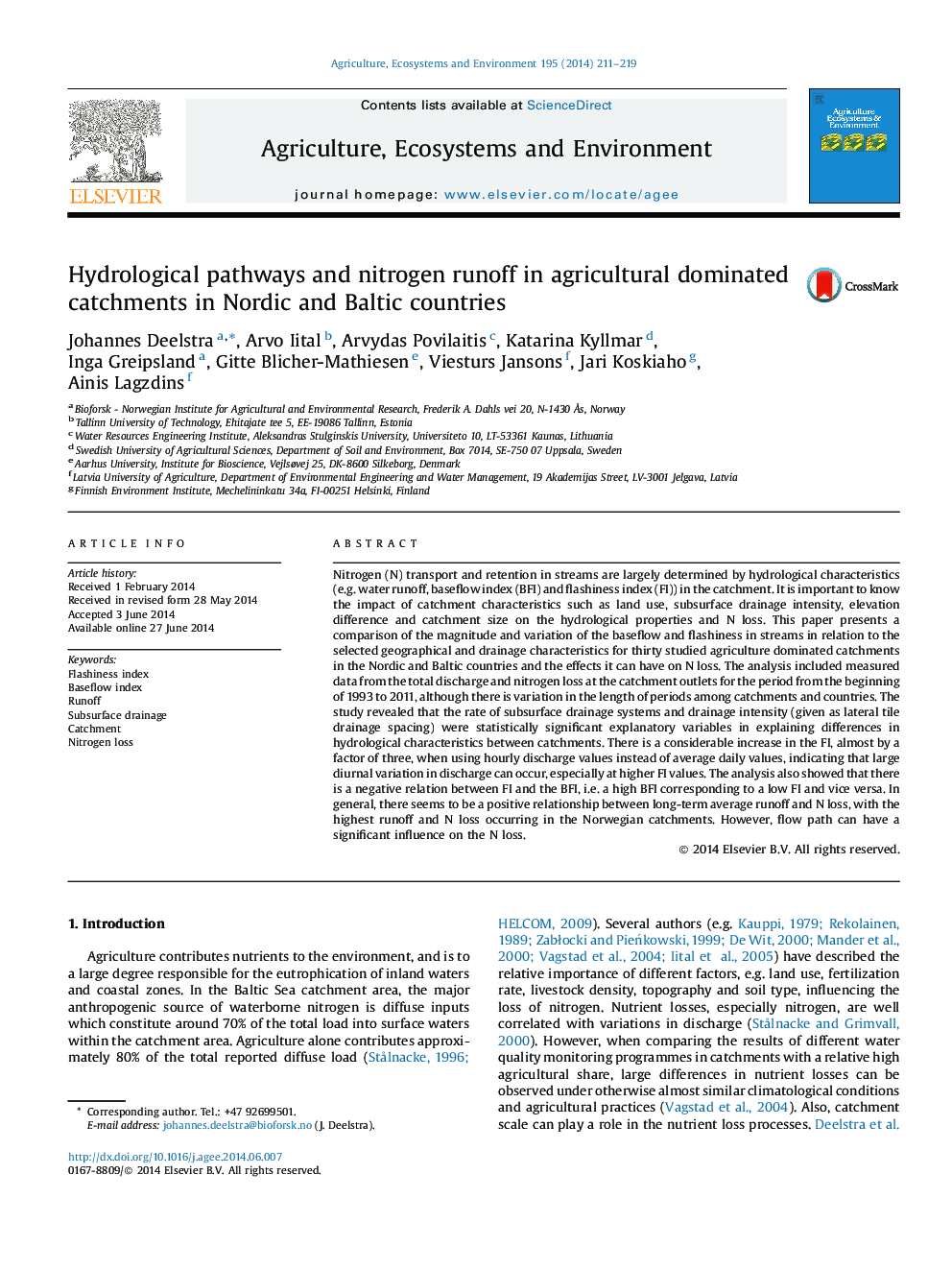| کد مقاله | کد نشریه | سال انتشار | مقاله انگلیسی | نسخه تمام متن |
|---|---|---|---|---|
| 2413924 | 1552057 | 2014 | 9 صفحه PDF | دانلود رایگان |
• Monitoring data from thirty catchments in Nordic and Baltic countries were analysed.
• A negative relation exists between flashiness (FI) and baseflow index (BFI).
• FI increases significantly when using hourly instead of daily discharge values.
• Drainage systems are important in runoff generation and nitrogen loss.
Nitrogen (N) transport and retention in streams are largely determined by hydrological characteristics (e.g. water runoff, baseflow index (BFI) and flashiness index (FI)) in the catchment. It is important to know the impact of catchment characteristics such as land use, subsurface drainage intensity, elevation difference and catchment size on the hydrological properties and N loss. This paper presents a comparison of the magnitude and variation of the baseflow and flashiness in streams in relation to the selected geographical and drainage characteristics for thirty studied agriculture dominated catchments in the Nordic and Baltic countries and the effects it can have on N loss. The analysis included measured data from the total discharge and nitrogen loss at the catchment outlets for the period from the beginning of 1993 to 2011, although there is variation in the length of periods among catchments and countries. The study revealed that the rate of subsurface drainage systems and drainage intensity (given as lateral tile drainage spacing) were statistically significant explanatory variables in explaining differences in hydrological characteristics between catchments. There is a considerable increase in the FI, almost by a factor of three, when using hourly discharge values instead of average daily values, indicating that large diurnal variation in discharge can occur, especially at higher FI values. The analysis also showed that there is a negative relation between FI and the BFI, i.e. a high BFI corresponding to a low FI and vice versa. In general, there seems to be a positive relationship between long-term average runoff and N loss, with the highest runoff and N loss occurring in the Norwegian catchments. However, flow path can have a significant influence on the N loss.
Journal: Agriculture, Ecosystems & Environment - Volume 195, 1 October 2014, Pages 211–219
